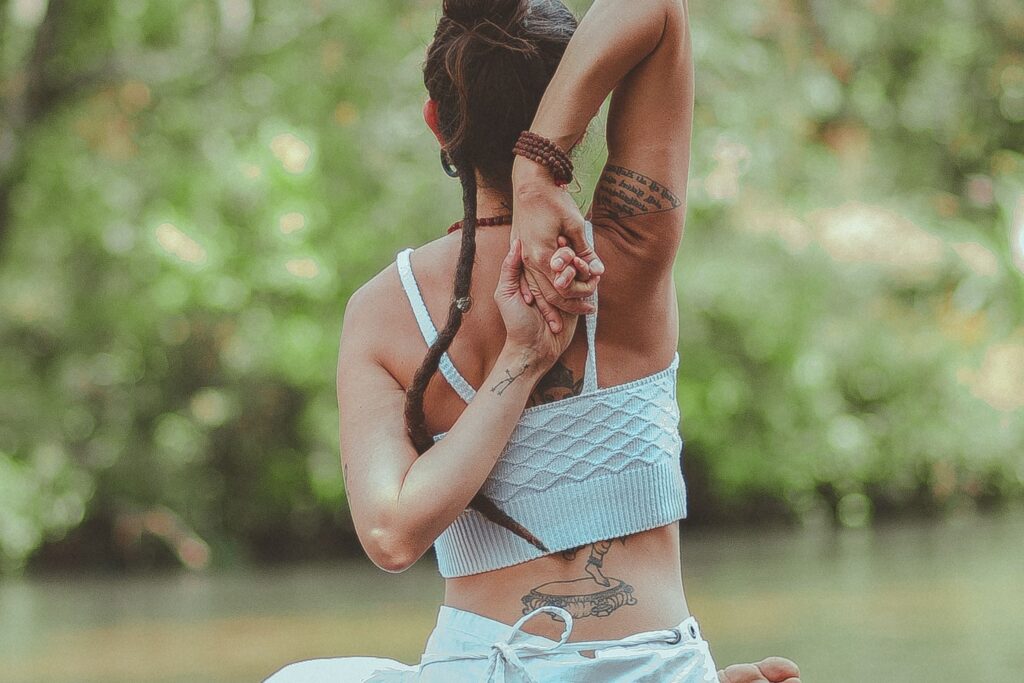Relieve tension for better posture.
(Photo: Canva)
Updated September 30, 2025 02:00PM
Every now and then, I catch myself subtly squeezing my shoulder blades together while sitting at my laptop, in long conferences, or even waiting at the airport. It feels surprisingly satisfying, almost like a mini reset. Eventually, I learned why: my shoulders were constantly in a rounded, forward slump, and that small squeeze was my body’s way of waking up my upper back.
Over time, I realized I wasn’t alone in craving an upper back release. As a yoga teacher, I hear more and more students ask for “upper back opening” practices. The students vary in age and profession—whether they’re corporate clients, college students, stay-at-home parents, even athletes—yet they all echo the same need.
That’s likely because the upper back tightens not only because of how we sit or work; it also reflects how we feel. Research shows that an upright posture is associated with higher self-esteem, better mood, and lower levels of fear, whereas slumped or rounded posture tends to reinforce negative emotions and fatigue. It’s easy to forget our lifestyles—including how we sit and scroll—affect our physical and emotional states. And it’s why the upper back deserves more attention than it usually gets.
Anatomy of the Upper Back
What we call the upper back is the thoracic spine, which runs from the base of the neck to the bottom of the rib cage. It naturally curves slightly forward and is designed to allow you to twist and reach. The thoracic spine not only supports the shoulders and neck, it also attaches to the ribs and gives your lungs the room they need to expand.
Think of the upper back as the straps of a backpack. When you balance the straps evenly, your shoulders naturally draw back and down, your chest lifts slightly, and the weight of your head and neck feel evenly supported. It creates space to breathe and gives you the freedom to move with ease.
But if the straps slip forward, the load shifts. The neck and shoulders are forced to take on extra work, leading to tension and strain.
10 Stretches to Wake Up Your Upper Back
Releasing tension in the upper back helps improve your posture and contributes to moving with more ease in everyday life. These stretches help you tap into that.
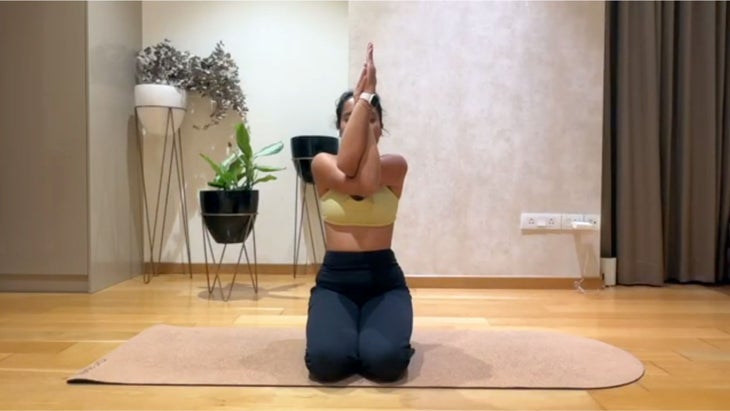
1. Eagle Arms (Garudasana)
How to: Sit or stand tall. Reach your arms in front of your chest. Wrap your left arm over your right, crossing at the elbows. Bend your elbows and press your forearms and backs of your hands together. Lift your elbows slightly away from your chest in Eagle arms. Stay for 5-7 breaths, then switch sides.
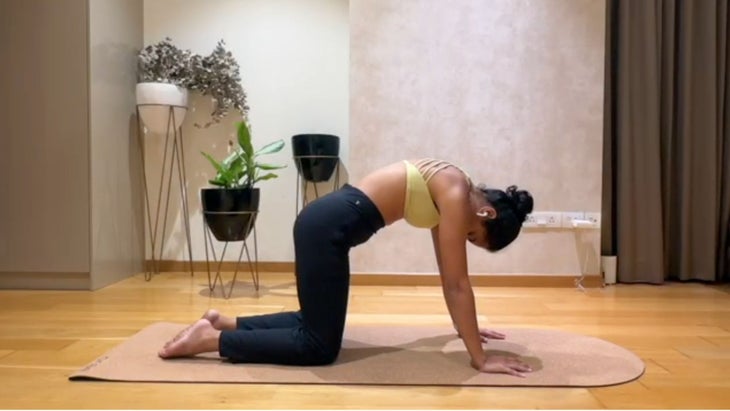
2. Cat-Cow Variation (Marjaryasana-Bitilasana)
How to: Come to your hands and knees. As you inhale, lift your chest and arch your upper back in Cow Pose. As you exhale, draw your shoulder blades apart, round your back, lower your chin toward your chest, and press your hands into the mat in Cat Pose. Repeat for 6-8 rounds of breath.
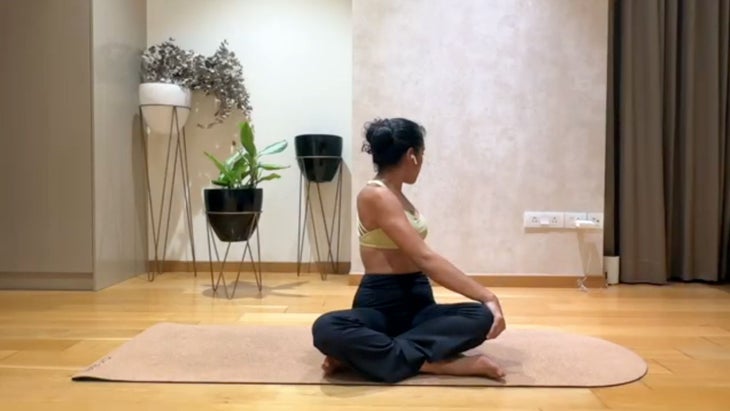
3. Supported Seated Twist
How to: Sit cross-legged on the mat or a block. Place your right hand on your left knee or thigh as you twist to the left and place your left hand or fingertips on the mat outside your left hip. Stay for 5 breaths on each side.
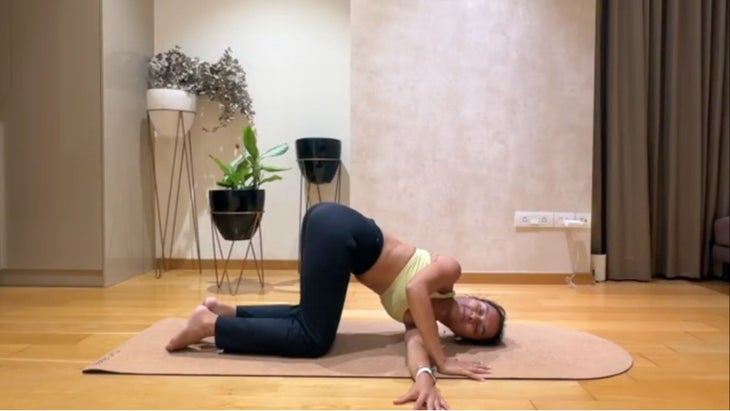
4. Thread the Needle Pose
How to: Come to your hands and knees. Slide your right arm behind your left wrist and rest your right shoulder and cheek on the mat. Keep your hips stacked over your knees. To increase the stretch, gently press your left palm into the mat. Stay for 5 breaths, then switch sides.
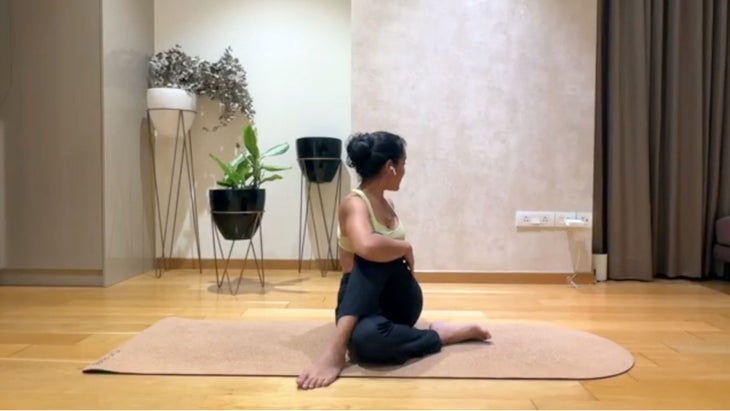
5. Half Lord of the Fishes Pose (Ardha Matsyendrasana)
How to: Sit cross-legged on the mat. Cross your right knee over your left and plant your right foot on the mat. Draw your feet a little closer toward your hips. Place your right hand on the mat outside your right hip. Inhale and reach your left hand toward the ceiling. Exhale and lower your left elbow to your outer right knee. Press your knee and elbow together. Twist toward the right, turning your gaze over your shoulder in Half Lord of the Fishes. Stay for 5-7 breaths, then switch sides.
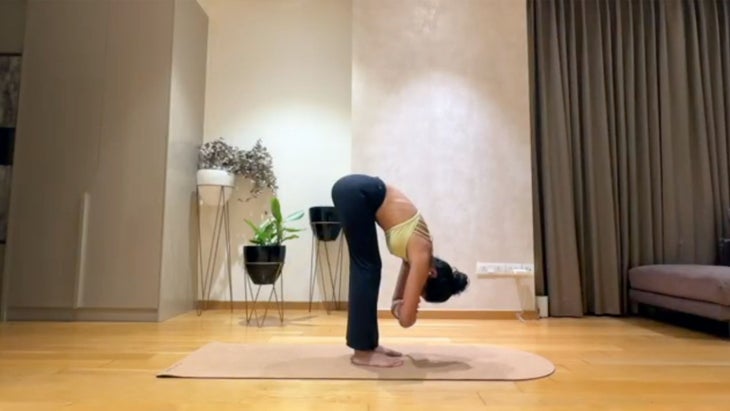
6. Forward Fold With Bound Arms (Baddha Hasta Uttanasana)
How to: Stand with your feet hip-width apart. Interlace your fingers behind your back, straighten your arms as much as possible, and hinge forward from your hips. Let your hands reach toward the ceiling as you release your head toward the mat. Stay here for 5-7 breaths.
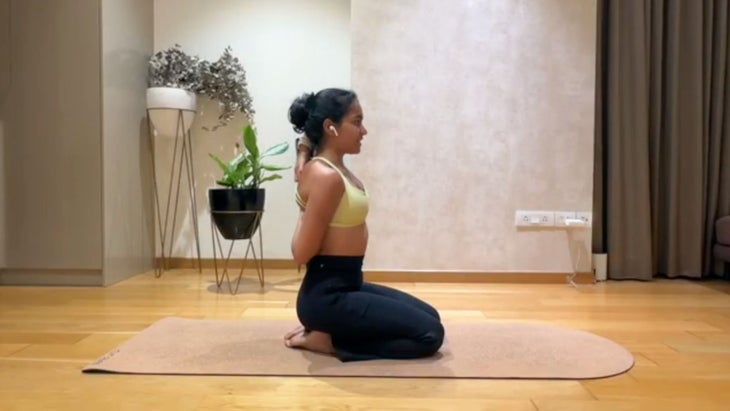
7. Cow Face Arms (Gomukhasana)
How to: Sit in a comfortable position. Reach your right arm to the side with your palm facing the wall behind you. Exhale and bend your elbow so your right hand is behind your back. Inhale and reach your left arm toward the ceiling with your palm facing the wall in front of you. Bend your elbow and reach for your right hand, clasping hands together in Cow Face arms. If they don’t meet, grasp a strap or towel between your hands. Stay here for 5-7 breaths, then switch sides.
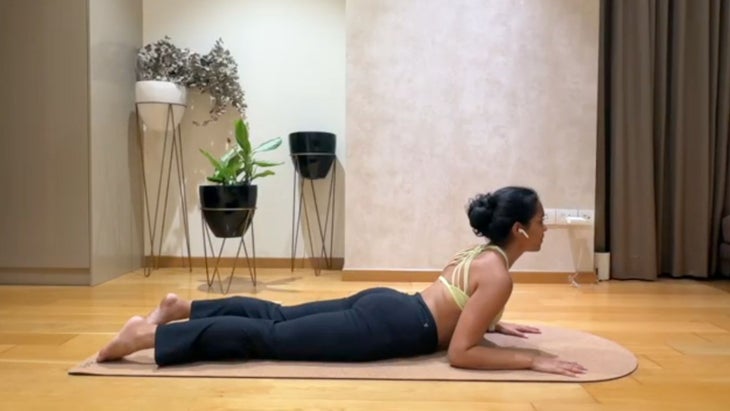
8. Baby Cobra Pose (Ardha Bhujangasana)
How to: Lie on your belly with your elbows bent and your palms flat on the mat underneath your shoulders. As you inhale, lift your chest a few inches off the mat, drawing your elbows toward your ribs. Lower your shoulder blades away from your ears in Baby Cobra Pose. Stay here for 5-7 breaths, then release.
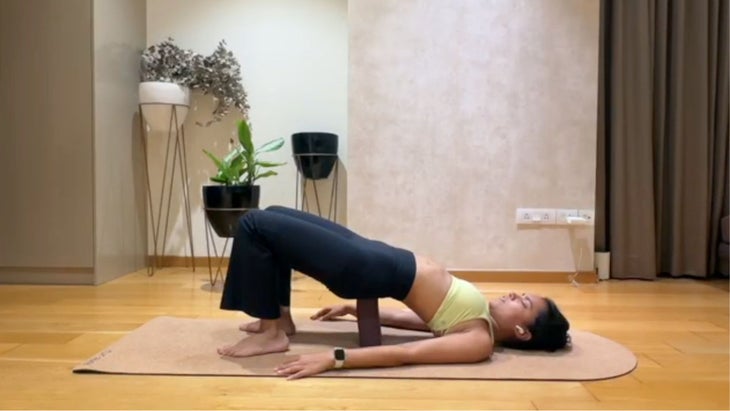
9. Supported Bridge Pose (Setu Bandhasana)
How to: Lie on your back with your knees bent and your feet flat on the floor. Lift your hips off the mat and place a block on the lowest or medium level underneath your sacrum. Rest your weight on the block. Relax your arms by your sides and draw your shoulders toward the mat in Supported Bridge Pose. Stay here for up to 1 minute, breathing into your chest.
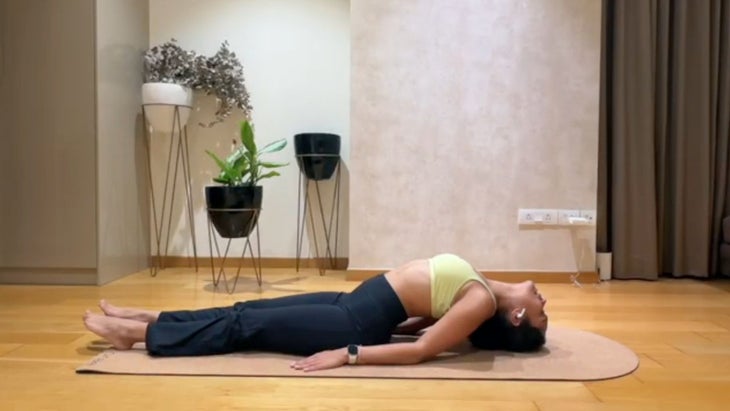
10. Fish Pose (Matsyasana)
How to: Lie on your back, prop yourself onto your forearms, and draw your elbows toward your ribcage. Lift your chest and gently release your head back, resting the crown of your head on the mat in Fish Pose. Stay here for 5 breaths, then release.


